Sansui is famous for making beautiful amplifiers and the Sansui AU-D707 (AU-819 in export markets) is no exception. Follow along as I repair this imported, broken beauty.
It should come as no surprise to regular viewers that I love Sansui amplifiers. We work on a lot of them here @ Liquid Audio; this year I’ve worked on five Sansui AU-D707 / AU819 integrated amplifiers alone, not to mention others in the series. See why I never get anything written?!
Articles I’ve put together on the Sansui AU-717 and AU-919 and even the AU-X11, which is the Japanese market version of the AU-X1 have become some of our more widely read content and a go-to for many readers, and I’m endlessly asked about this lovely series of amplifiers. Sit tight Rob, your AU-X1 is coming!
With that in mind, having been up to my eyeballs in repairs and wanting to write, what better time than to look at this venerable and often overlooked beauty? Let’s go!
Video coming soon, check back later!
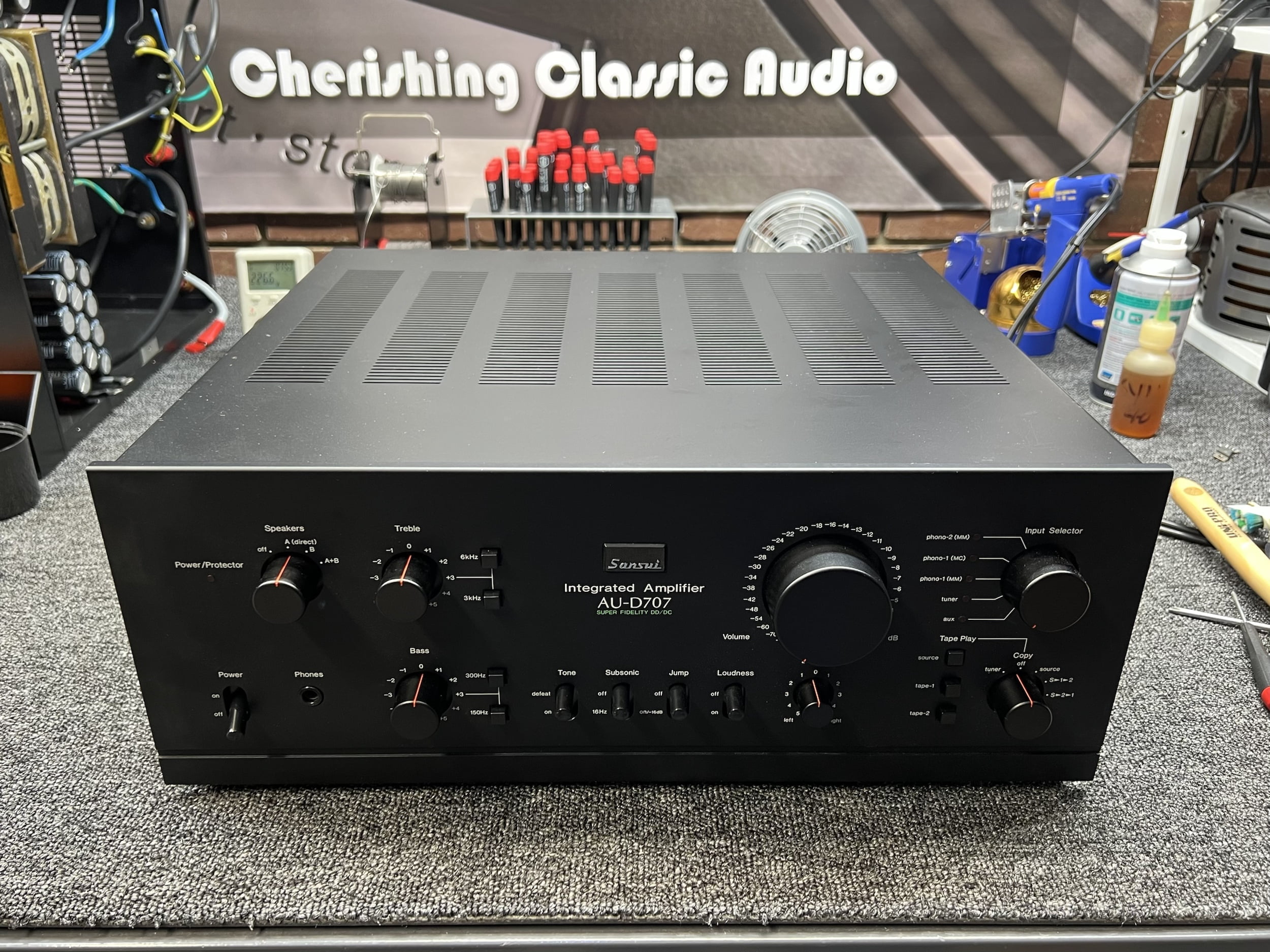
Sansui AU-D707 Specifications
Courtesy of HiFi Engine
Do you love HiFi Engine? You should!
Power output: 90 watts per channel into 8Ω (stereo)
Frequency response: 10Hz to 20kHz
Total harmonic distortion: 0.008% (that’s low)
Damping factor: 100
Input sensitivity: 0.1mV (MC), 2.5mV (MM), 150mV (line)
Signal-to-noise ratio: 74dB (MC), 90dB (MM), 100dB (line) (very good MM figure)
Output: 150mV (line), 1V (Pre out)
Dimensions: 430 x 168 x 428mm
Weight: 21.1kg
Features
The Sansui AU-D707, also known as the Sansui AU-819 in overseas markets, is a roughly 100W per channel, fast bipolar integrated amplifier with the usual high-quality Sansui build, excellent, discrete phono amplifier and sound-shaping features like filters and tone controls, typical of the day.
Switches and potentiometers are all high-quality ALPS and Elna parts, far better than you see in almost anything today. The phono preamp in the AU-D707 is almost fully featured, catering to one MC and two MM carts, harking back to when some used multiple arms or even turntables in a hi-fi system. Think you own a serious turntable? You can’t even spell serious until you own a two-tonearm turntable!!
I own one.
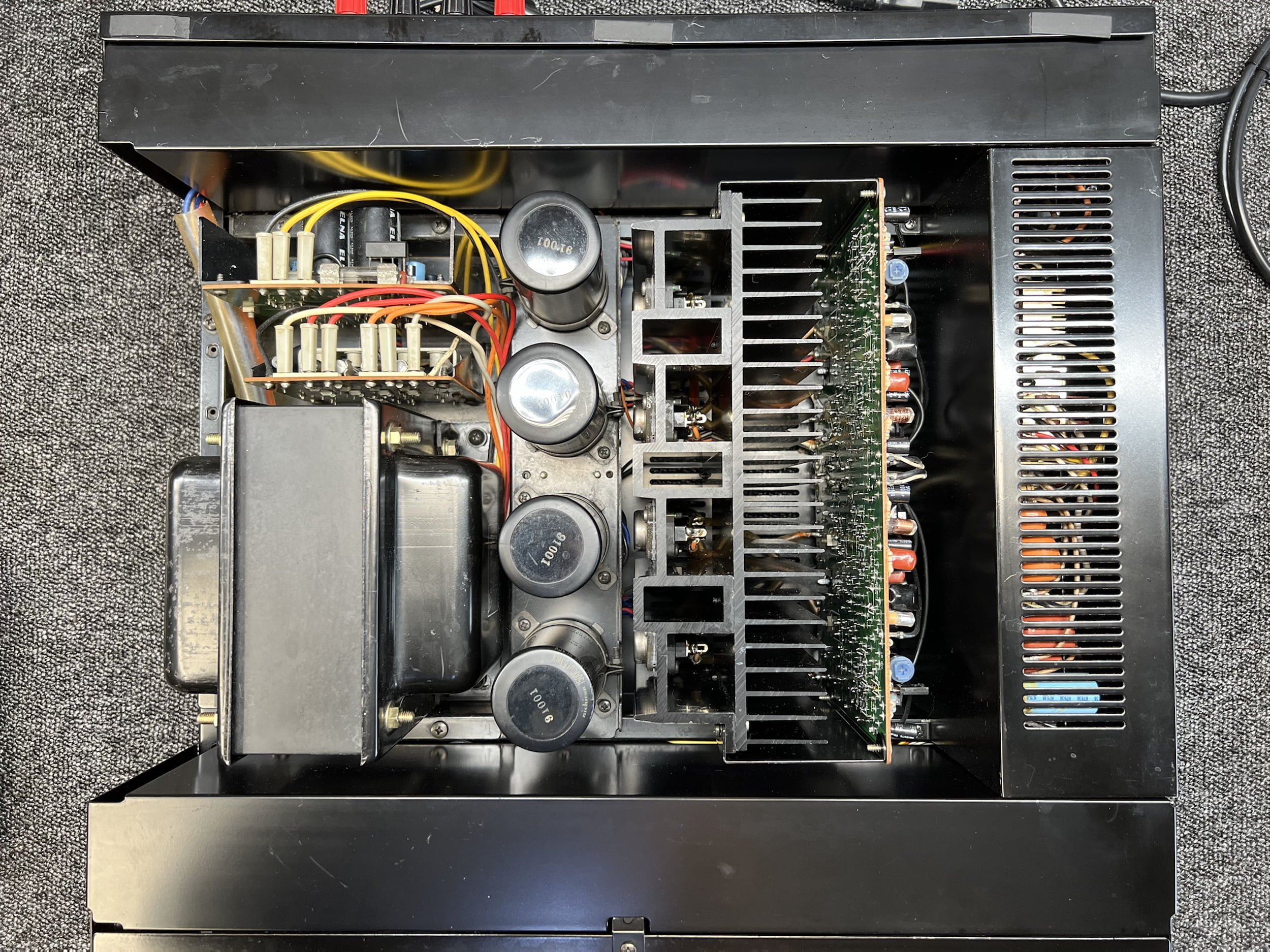
Anyway, the Sansui AU-D707 / AU-819 is a step up from the more common AU-717, and predictably not quite as good as the AU-919. In terms of features, as you go up the range, you get a better phono preamp in the AU-819 vs the AU-717 or AU-719. You also get a smidge more power, nothing you’d ever notice, plus a noticeably heftier build and certainly lower distortion and better specs.
Actually, the AU-D707 / AU-819 are more similar to the AU-919 than the AU-717. The AU-D707 and AU-819 also have the same high-speed DC-coupled circuitry I talked about in the AU-919 review, so check those details out over there.
There is one major drawback with the AU-D707 if you live in Asia, Europe or Australia – it is a strictly 100V unit and needs a beefy step-down transformer to run. Strictly speaking, you’d need a step down even if your line voltage is 120V.
Note that if you use a suitable transformer, it will provide a suitably low source impedance, and there’ll be no performance penalty. One could argue that isolation is a good thing in terms of noise. Still, for some, this will be a deal-breaker, and I understand that.
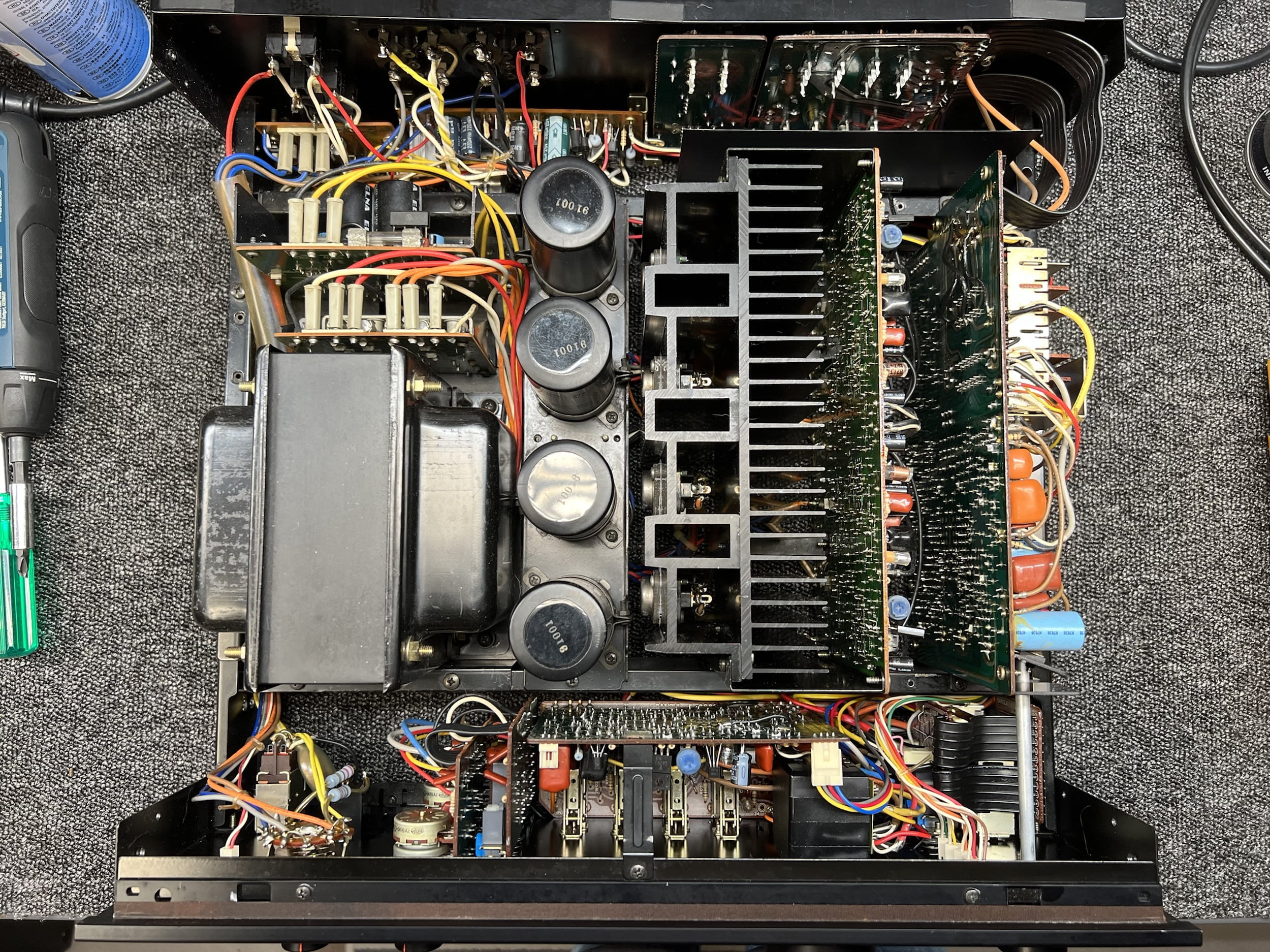
Inspections
This Sansui AU-D707 was sold as fully functional, but as so often happens when you buy something like this without any kind of guarantee, it arrived not working. Who knows if the seller knew, though I suspect they did, as someone had removed dozens of components looking for something. In the end, it doesn’t really matter; fixing it does.
The owner is a regular customer, and the previous AU-D707 he imported was also broken. I inspected and worked on that one too, a few weeks ago. It needed a repair to the preamp for bad transistors which was no problem and a new volume potentiometer which is most definitely a problem!
Liquid Audio undertakes pre- and post-purchase inspections for our customers. With these two Sansui AU-D707 amplifiers, post-purchase inspections resulted in our customers receiving substantial (multi-hundred-dollar) refunds from both sellers.
The refunds covered inspection and repair costs here, and that’s typically what happens, so I cannot overstate the value and importance of pre- or post-purchase inspections with vintage hi-fi gear. It gives buyers some genuine recourse, should they need it.
Problems
Here’s a summary of issues this Sansui AU-D707 presented with:
- Massive DC offset in one channel
- Noise, crackling in that channel
- Quiescent current adjustments are dangerously misadjusted
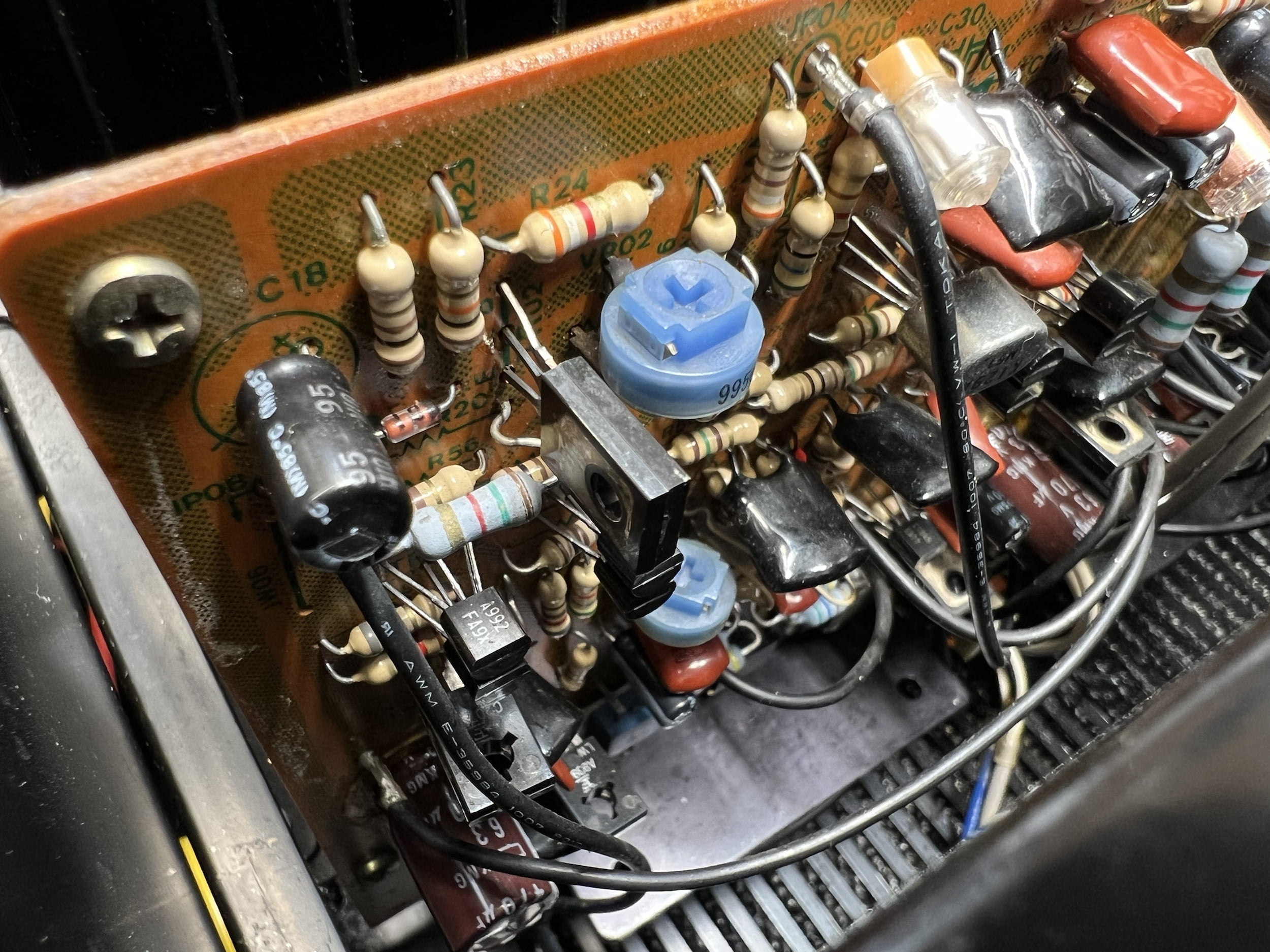
The amp crackled badly and produced no sound other than the annoying crackle, even though it came out of protection. A few measurements showed that it was massively over-biased and had a brutal DC offset in the left channel. Functional testing also revealed that the fault resided on the driver board, and I quickly isolated the issue to a faulty small-signal transistor.
Faults like this are extremely common with this series of Sansui gear and solid-state electronics in general. They are also often poorly understood, and faults like these can be multi-factorial in that several issues can overlay one another, all contributing to the same broad problem. As someone who understands the many causes and solutions to these DC asymmetries, protection and other problems, I can let you in on a little secret – they are not always easily resolved!
Remember, we are dealing with a complex, old amplifier that, in this case, contains many dozens of old, original semiconductors alone. Someone experienced in tracking down these faults will always resolve them, but it might take time, so be patient. If you have a good repairer, stick with them and respect their process as they work through these sorts of issues.
As I mentioned in my AU-919 review, there’s a lot of misinformation about classic hi-fi gear like this beautiful AU-D707. You’d be led to believe that black flag caps are the worst thing ever made and that they must be immediately removed wherever they are found. This is factually and technically incorrect.
Can these parts fail and cause problems? Yes. Should they be replaced? Maybe, I’m not against it. I’m just always much more interested in finding and fixing the faults first. Amplifiers in this series often present with faults caused by more pressing issues that should be resolved first, like noisy transistors with no gain, for example and polychloroprene glue issues!
Repairs
First things first – cleaning and the service of switches and controls. If an amplifier is filthy, it will never run right. Know this and work to make your gear as clean as possible, and that includes the boards, flux residue etc.
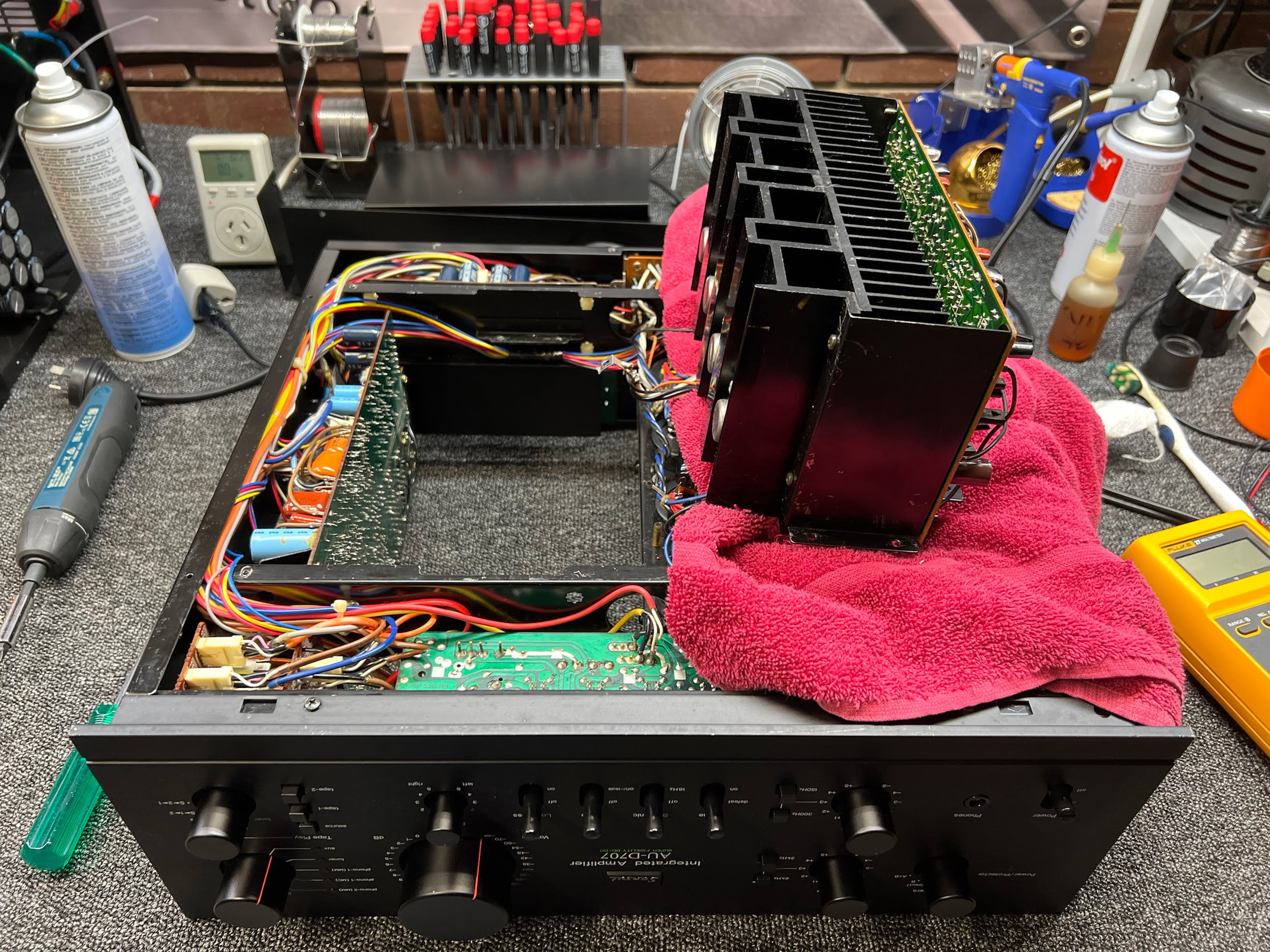
This was here for an assessment and repair, rather than an overhaul, so with that in mind, I assessed the remaining issues and isolated the fault to the driver board by carefully listening with headphones whilst checking and testing transistors, group by group and then individually.
I won’t go into detail on that process here, but if you know how to do this and what to listen for, it can tell you a lot. This technique helped me isolate the likely culprits pretty quickly. It’s also worth noting that noisy transistors like the one I found here can occur anywhere in an amplifier like this, across multiple boards. Faults like this are actually more common elsewhere, often occurring on the preamplifier board.
Next, I removed the amplifier module, freed the PCB and removed what I thought were the likely suspects. Sure enough, the second device I tested had an hfe of 5. That equals a dead transistor. Having found the likely culprit, I installed four hand-matched brand-new parts of the same vintage type/spec, cleaned the board and reinstalled everything.
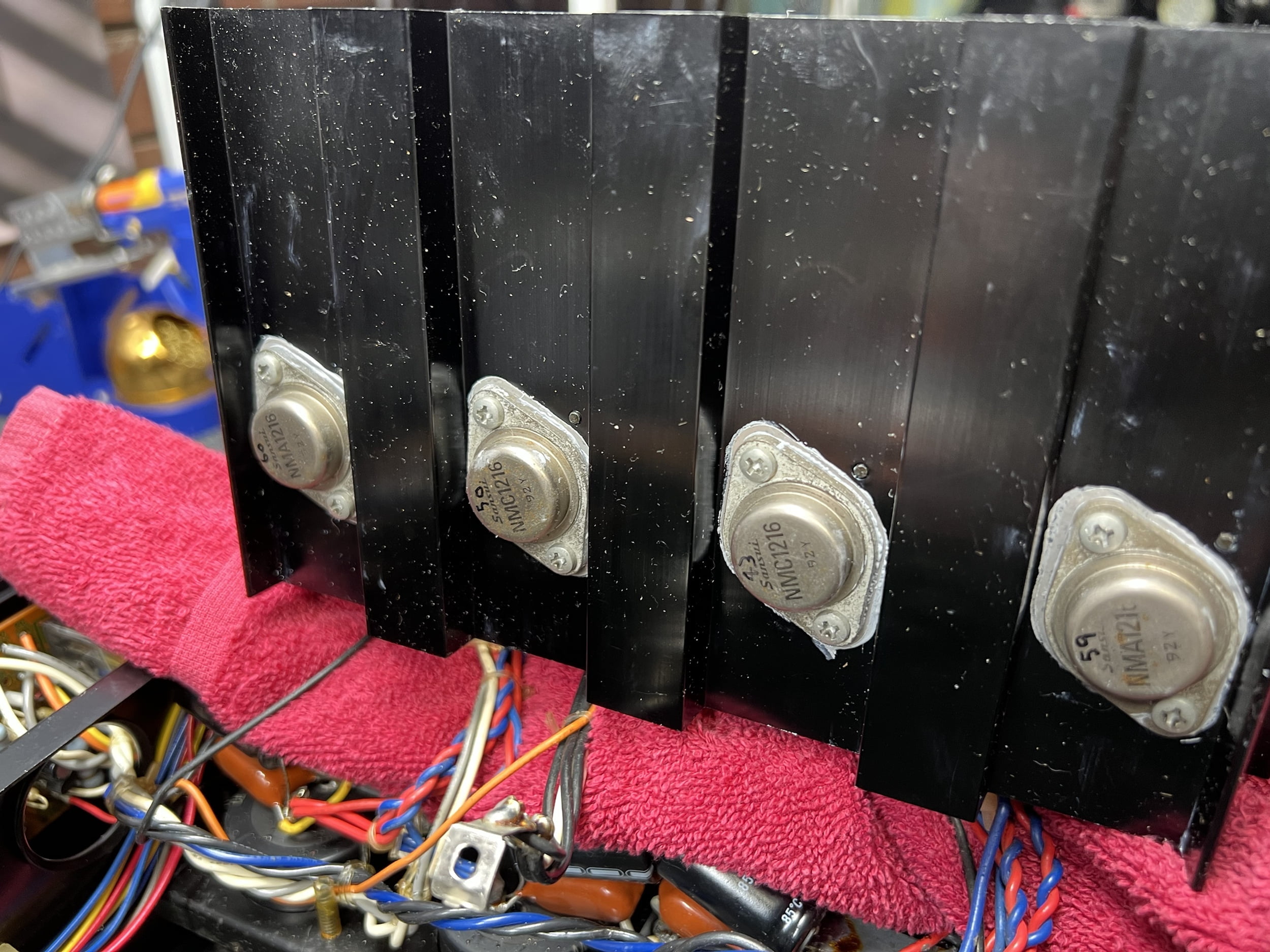
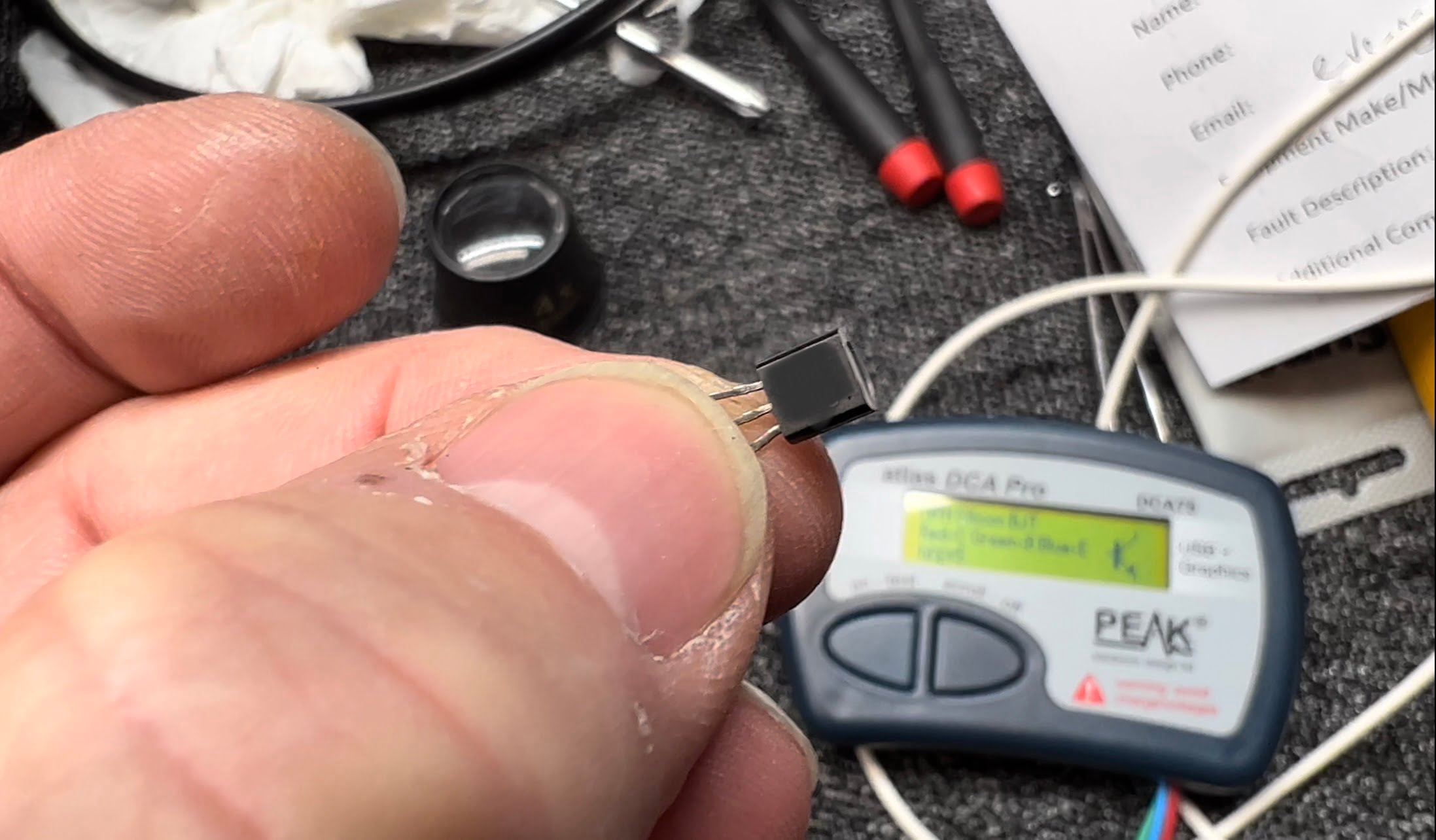
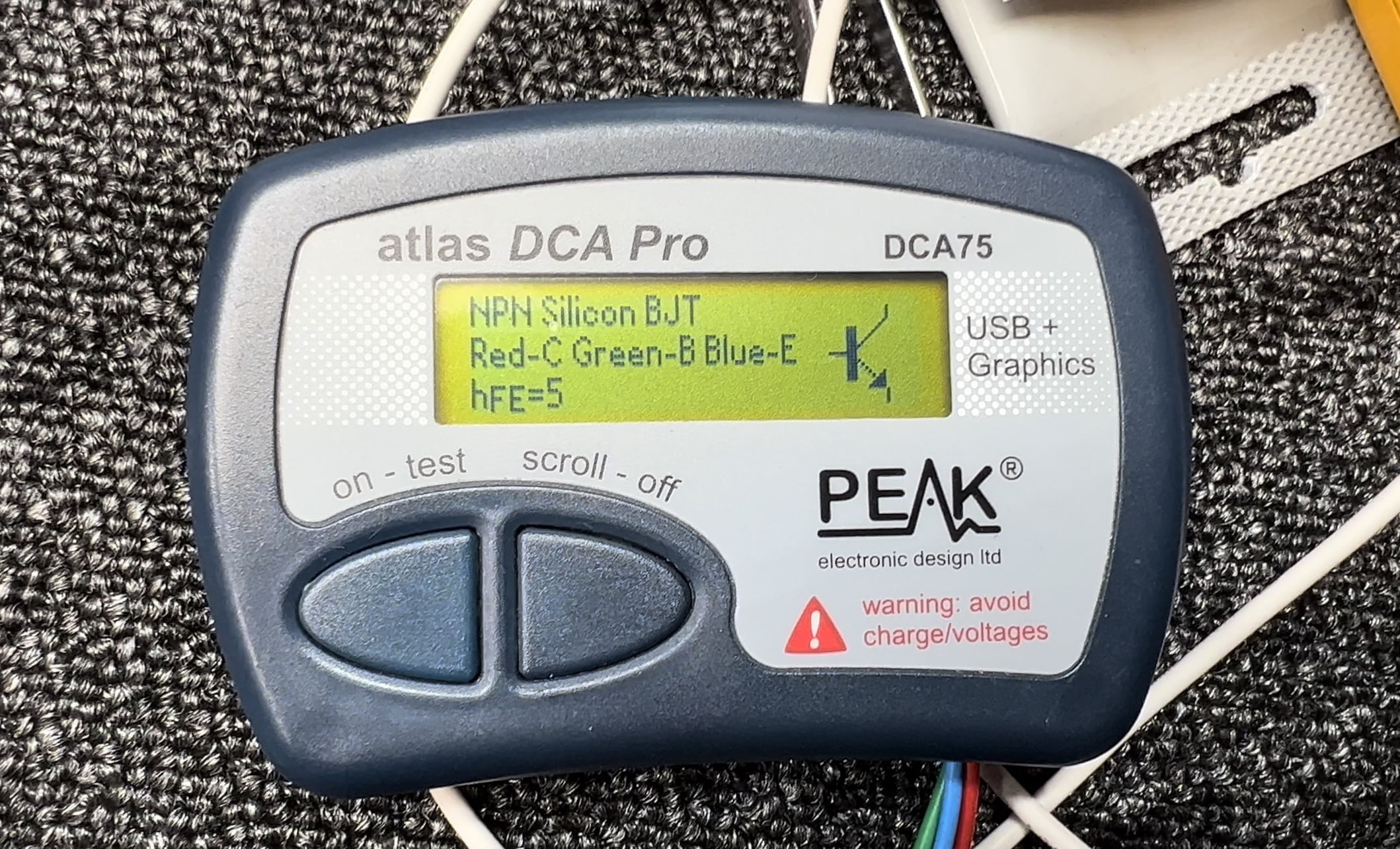

Note that shotgunning an amplifier like this with a ‘kit’ because you think it might help is not the way to go, nor is owner-conducted maintenance on something like this a good idea, unless they have a good understanding of such work. The seller had tried to repair this amplifier by just replacing stuff, but unsurprisingly, it hadn’t solved the problem.
This sort of approach rarely fixes the problem, and it dramatically increases the risk of board damage and the introduction of unintentional errors. It’s always best to find and resolve the problem first, assuming we want to repair something. Other work can then be completed as requested, and as a customer’s budget allows.
The shotgun approach is kind of like saying “My car makes a noise, I don’t want to or cannot work out why, I just want to replace all the parts.” This is a silly approach and certainly not a cost-effective or viable one from a business perspective. It also deprives one of the wonderful learning opportunities involved in tracing and resolving faults. It’s worth noting that this is how one becomes good at this type of work!
This is why I always chuckle when people say “But Mike, you didn’t replace, y, or z.” If I didn’t replace something, you can be sure there’s a good reason and that the decision will be a carefully considered one. It will usually be because the part/s didn’t need to be replaced, or the budget didn’t allow for their replacement.
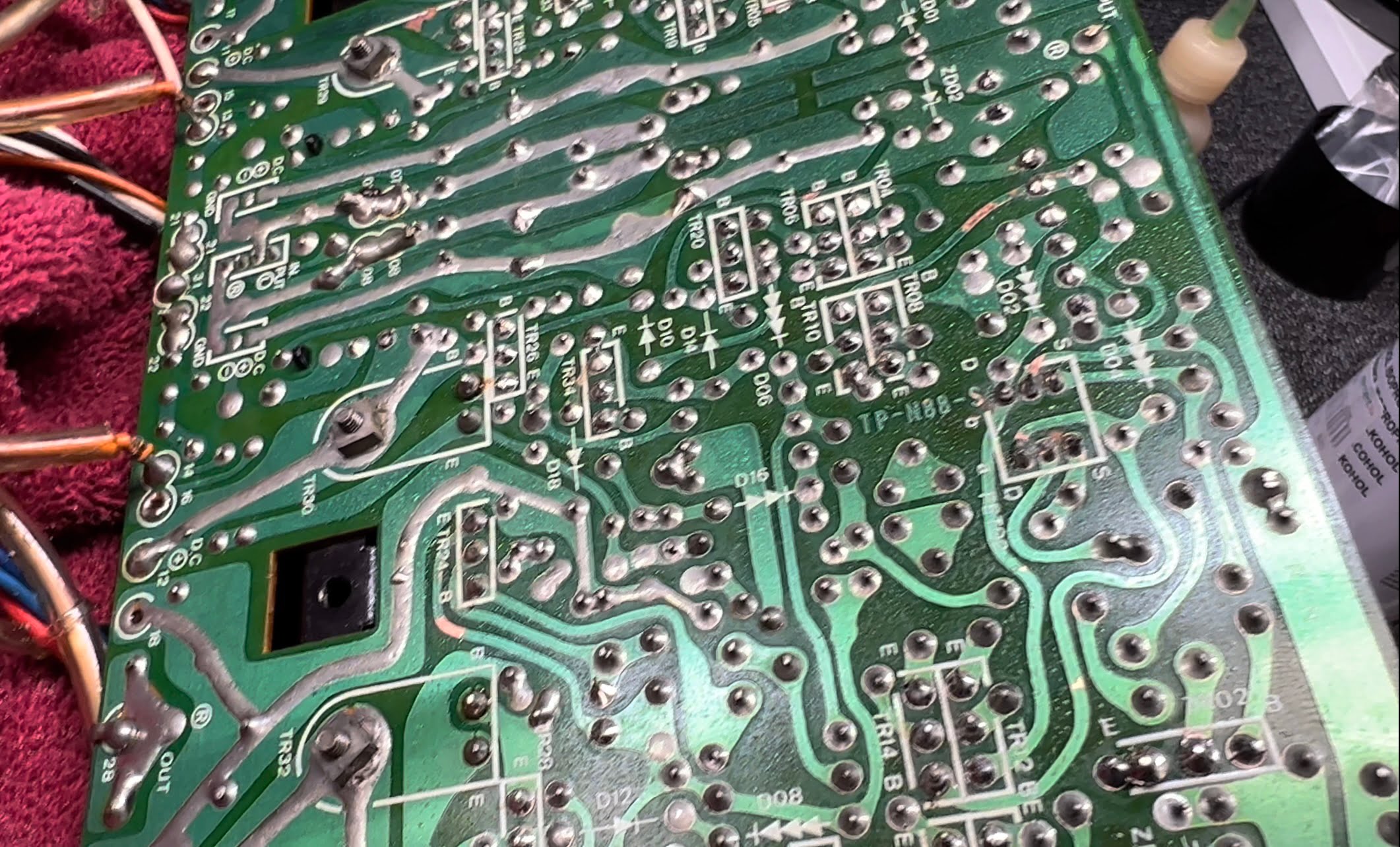
Naturally, I defluxed the board, tidied up many solder joints and generally improved the reliability and stability of the amplifier by re-thermally bonding the drivers to the main heatsink in this lovely old girl, too. Lastly, I set all the DC adjustments in the pre and flat amps and, set quiescent current, repaired a bent front panel power switch and loose tone control knob.
Results
The owner of this amplifier is a genuinely nice guy and appreciated our efforts to resolve this for him and get him some money back from the seller. He very kindly delivered four of the tastiest IPAs I’ve sampled when he collected his amplifier. Thanks, Russell, I genuinely appreciate the appreciation!
Actually, the human part of helping good people is more rewarding than even fixing tricky faults like this one. The owner of this amp has been messed around with a couple of items he’s purchased, so he needed a good result his way, and that’s what we delivered.
We will overhaul this amplifier later if the owner decides that’s still how he’d like to proceed, and he’s strongly indicated that this is what he would like to do. That will include replacing the filter capacitors with some nice parts, removing all the black flag caps and other suspect parts and giving this stunning amplifier a new lease on life.
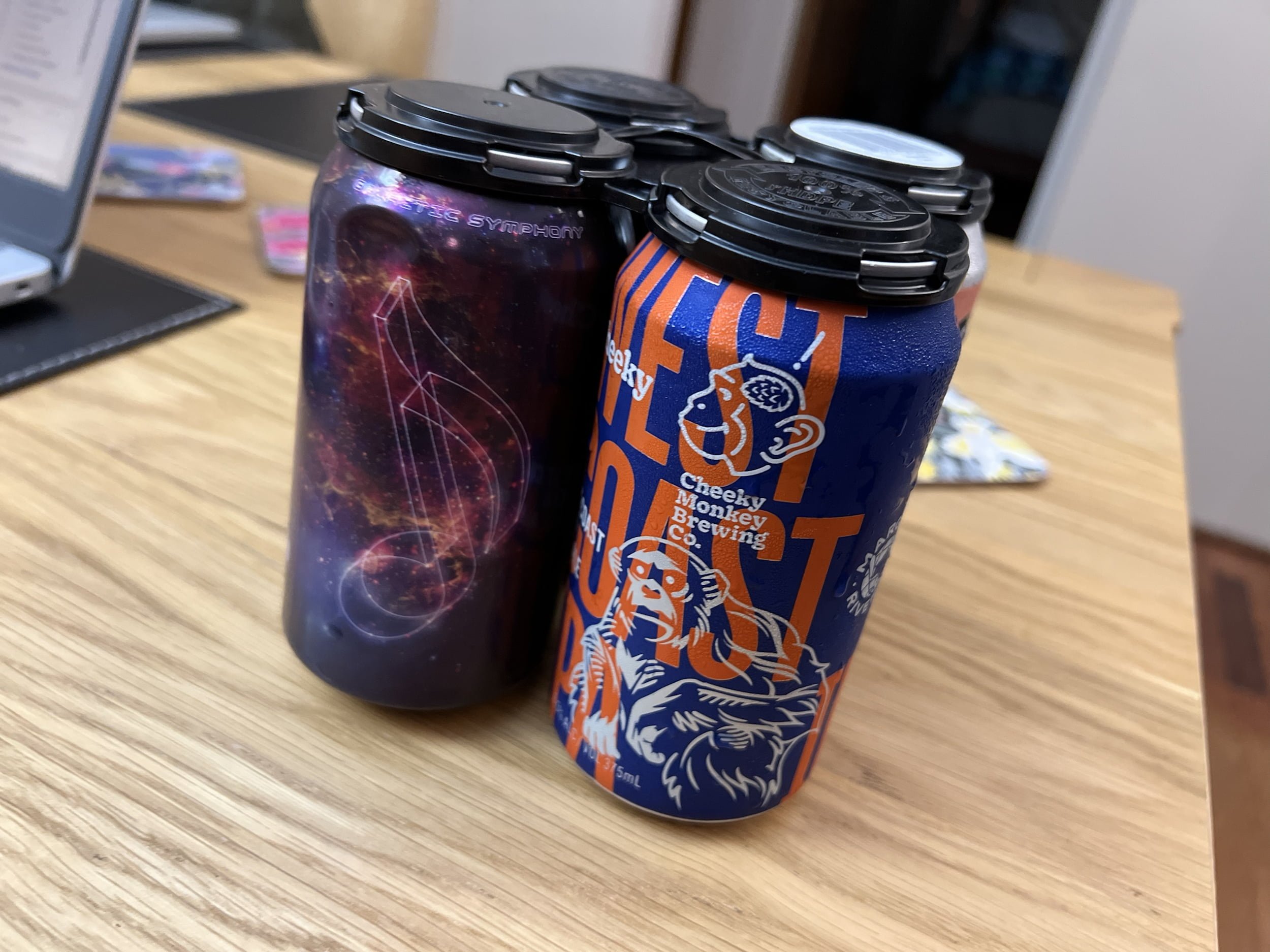
A big shout-out to all my amazing customers, readers and friends of Liquid Audio. You know who you are!
Performance
A well-sorted Sansui AU-D707 / Sansui AU-819 sounds amazing. This one is clean, punchy, warm and involving, a real pleasure to listen to for long periods of time. The amplifier is well-designed, and serviceable, uses mostly discrete components making it very repairable, and has excellent specifications and measured performance. I don’t have one to sell you, I’m just letting you know these are great amplifiers, a modern classic, no doubt.

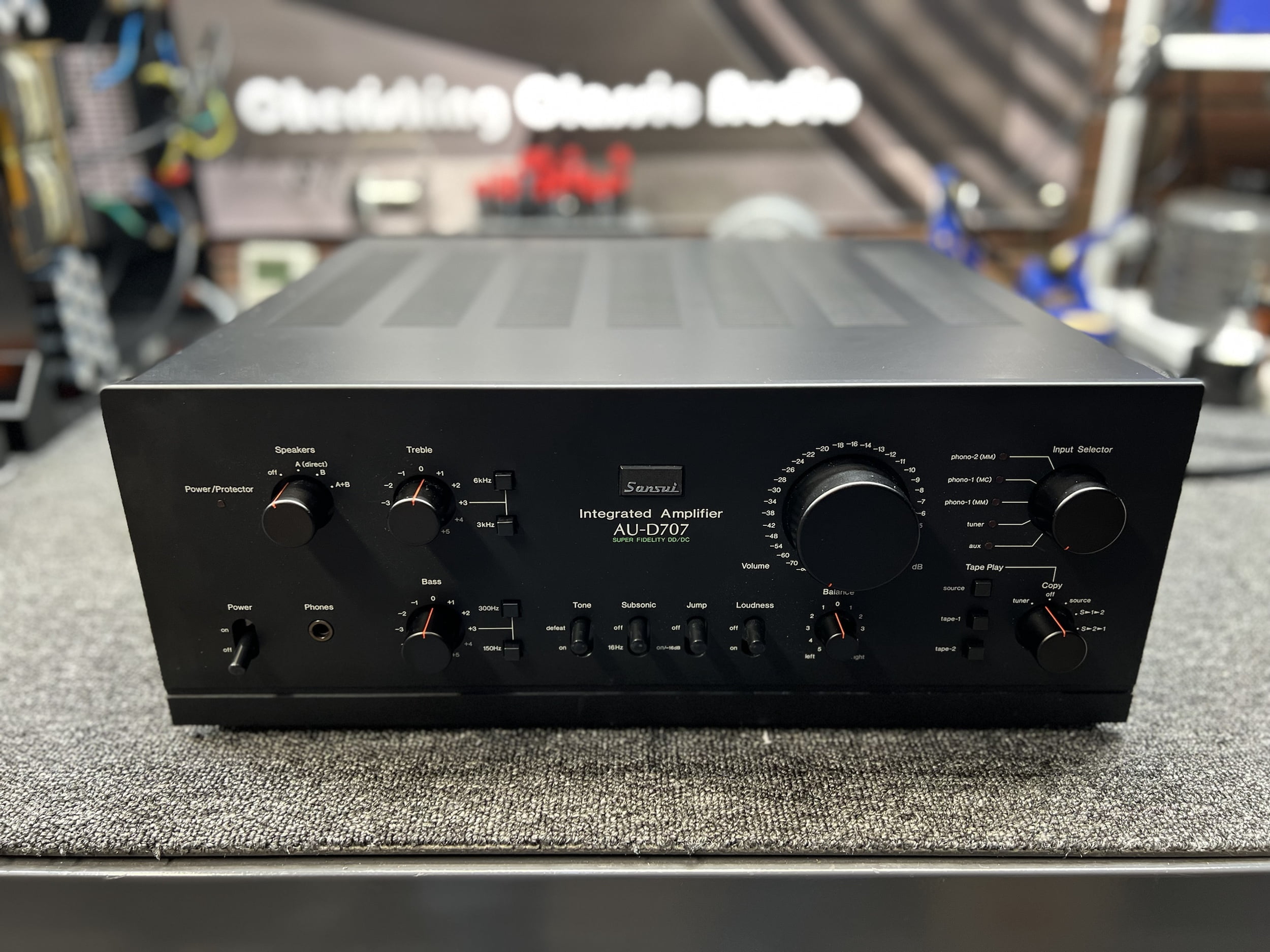
To get something similar with JFET in the right places, fast output devices, four filter caps and superb discrete phono stage you’d be…, no, wait – you can’t really get anything like this new now. To really get something like this you’ll likely need to focus on older amplifiers, and there are plenty of good ones. I won’t mention them here.
For comparison with newer gear, let’s simplify this and just look at high-quality, roughly 100W per channel integrated amplifiers with superb built-in phono stages. If you don’t mind mass-produced Chinese hi-fi gear, the Audiolab 8300A integrated at around $2500 AUD offers 75W and an MM/MC phono pre, though it’s neither discrete nor superb.
Then there’s the Cambridge Audio 851A, at ‘just’ $3200. Take my word for it though: don’t do this if you value equipment that lasts and that’s built using decent parts. Modern Cambridge Audio gear is B – A – D bad in terms of service life and repairability.
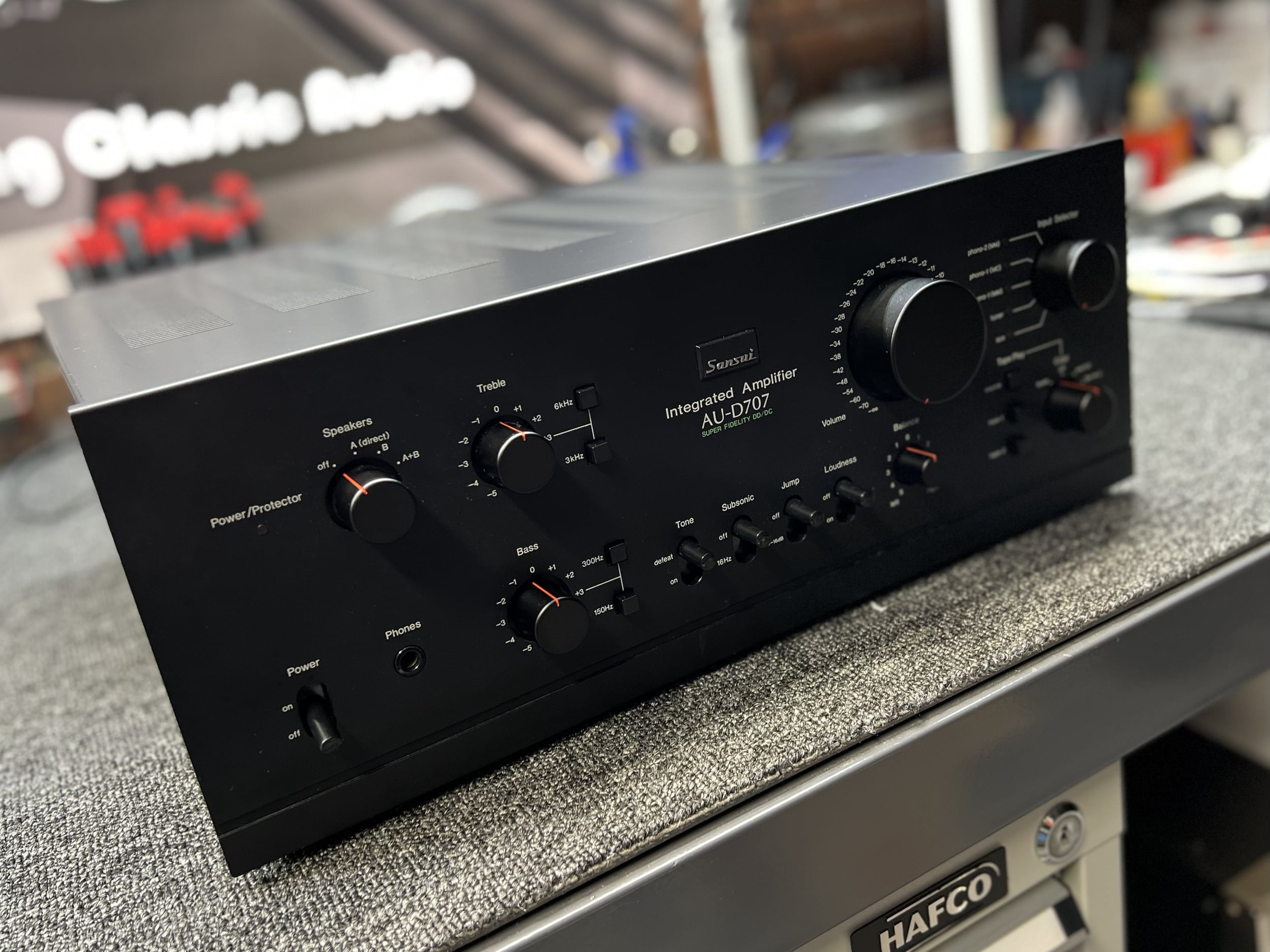
The Denon PMA A110 at $6999 is much more like it and offers some decent quality for the money, but Jesu$, the money! You could also consider the Marantz PM12SE, at $5990, but again, ouch, and it only weighs 15kg. Plus, it has a switched-mode power supply and other stuff that guarantees no more than about 10 years of service. How old is this Sansui AU-D707 again..? Oh yeah, 42 years, as of 2022. Not bad for an old ‘outdated’ amplifier hey?!
My pic from new gear includes the Yamaha AS-2200 at $4950, because Yamaha just gets it. The thing weighs about the same at 22kg and it features really decent build and layout. Bravo Yamaha for caring enough to build this stuff. I also really like the Luxman L505uX11 at $6999. Luxman makes beautiful gear again, finally. Of course, there’s my favourite Accuphase. An Accuphase E-280 is on par in terms of specs and better built for sure. It also costs about $10K.
You’ll see my point – do you want to spend $5 – $10K on something that is bound to use some SMD parts with a limited lifespan, or do you spend a quarter of that on a golden age classic that’s repairable 40 years on?
Look, call me jaded, call me biased, but I can tell you what I’d rather own, and you probably know what that is, unless someone offered me the Luxman or Accuphase for $1500, which they won’t. Just remember, you want the AU-819 for multi-voltage capabilities.
The Bottom Line
If you need a superb-sounding 100-ish Watt-per-channel integrated amplifier with an excellent phono preamplifier and prefer the classic, timeless gear from the golden era, look no further than the Sansui AU-D707 or AU-819.

Need yours serviced or repaired? Look no further than Liquid Audio, your Perth-based classic hi-fi equipment repairer!
As always, thanks for reading and if this helped you in some way, consider that it took me many hours to put together, on top of many years getting to this point. There’s a donation button in the footer!
Discover more from LiQUiD AUDiO
Subscribe to get the latest posts sent to your email.

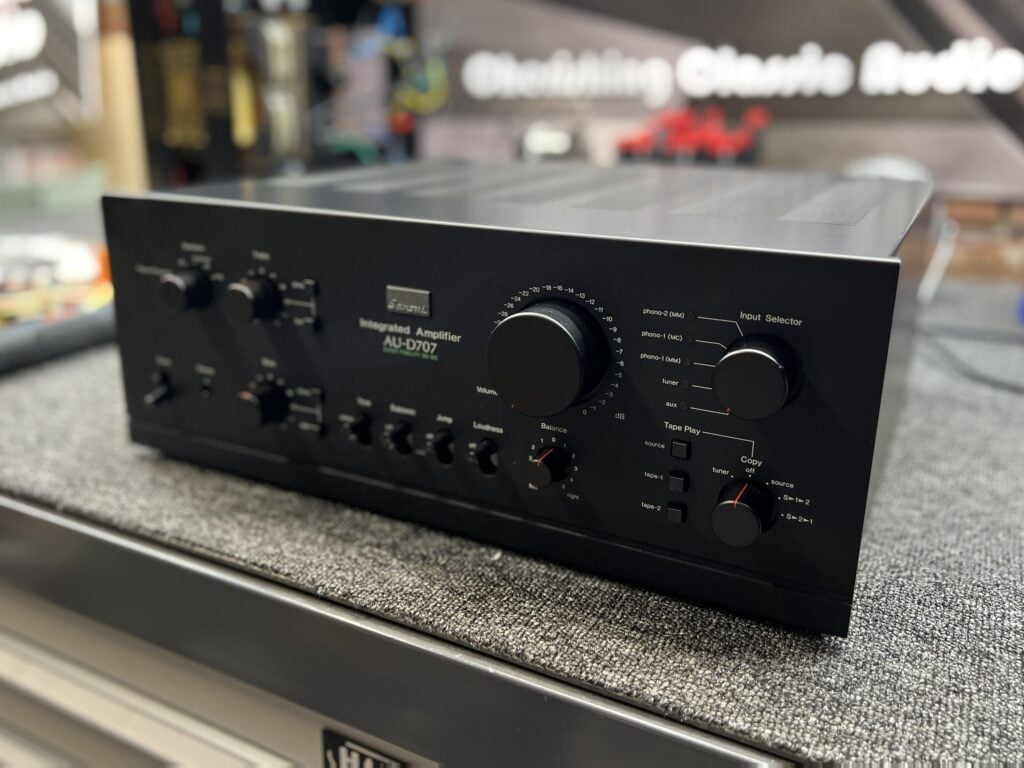
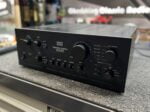

Love reading your story’s…great work Mike. Would be great to listen to it. Cheers
That’s very kind of you Mike, I love working on your gear too, hope to catch up with you again soon and hope all is well!
Tengo una pregunta sus tránsitores de potencia son mnc1216 y mna1216 mi pregunta es sus posicion es los dos mna1216 (son negativos) van a los extremos y los dos mnc1216 van en el medio es así espero su respuesta gracias
English: I have a question. Your power transistors are MNC1216 and MNA1216. My question is, are they connected correctly? Do the two MNA1216 transistors (which are negative) go at the ends, and the two MNC1216 transistors go in the middle? Is that correct? I look forward to your response. Thank you.
Hi, thanks for your question, and I’m glad you found the article helpful. I repaired this amplifier some years ago, so I cannot recall the details or the transistor arrangement and location. The amplifier ran beautifully after my repair, though, which implies that the devices were in their correct locations.
Have you cloned yourself so the clone could come to the southeast part of the USA?? Detailed explanation is very valuable!!!
Ha ha! Thanks for the support Chuck, always very much appreciated!
How good can a Monday get when it starts with a new article by Mike about saving a vintage Sansui?!!
As usual, good clear useful article that shares the passion and expertise of the author.
Just need to find the SEOz equivalent of Mike!
(PS hope your health worries are receding, Mike)
Well it’s just great to know that people enjoy these articles Robert, thanks for your support. Health improving, let’s hope the issue can be completely eliminated.
Good job !
Looks great.
I once had an old Sansui and my local repair shop told me the transformer was burnt out and parts were not available and therefore it could not be repaired.
Thanks, Ralf and yes sadly this type of story is all too common and often incorrect.
As always, a brilliant read Mike! If ever my Sansui turntable turns the tables, I will come see you!!
Thanks, John and I am always here to assist with anything like this if you need it!
Hello Mike
Another great article. I am so glad that you found time to write it.
You are so right about equipment like Audiolab and Cambridge (to which I would add Arcam and Naim). How sad that the Hifi reviewers have set audio back so much that there is very little contemporary equipment that can hold a candle to all that 40 and 50 year old Japanese equipment. Sansui made such amazing amplifiers as did so many Japanese manufacturers. Your articles are always a delight.
Cheers
Marius
Hello Marius, thanks so much for taking the time to comment, really appreciate the kind words. I would not include Naim in that group as most of their stuff is still superbly made and modern Arcam is definitely better than Audiolab or Cambridge, but I understand your point. And yes, the broader hi-fi media and retailers are simply set up to hoodwink people and sell product. It’s a shame, but people are waking up to it, at least some are!
Wonderful read as always Mike. Jason fixed my speaker too – so thanks for the recommendation!
Thanks, David, very good news all round there I think!